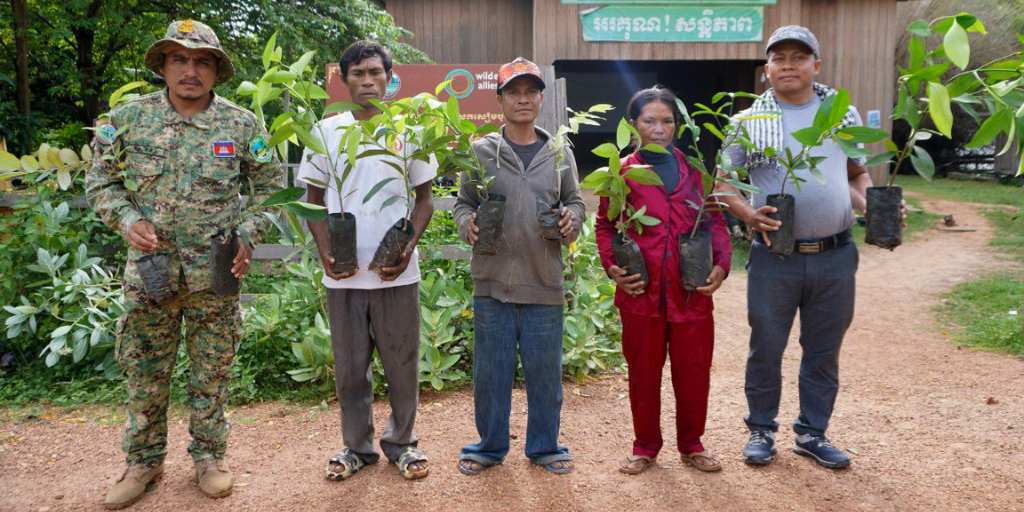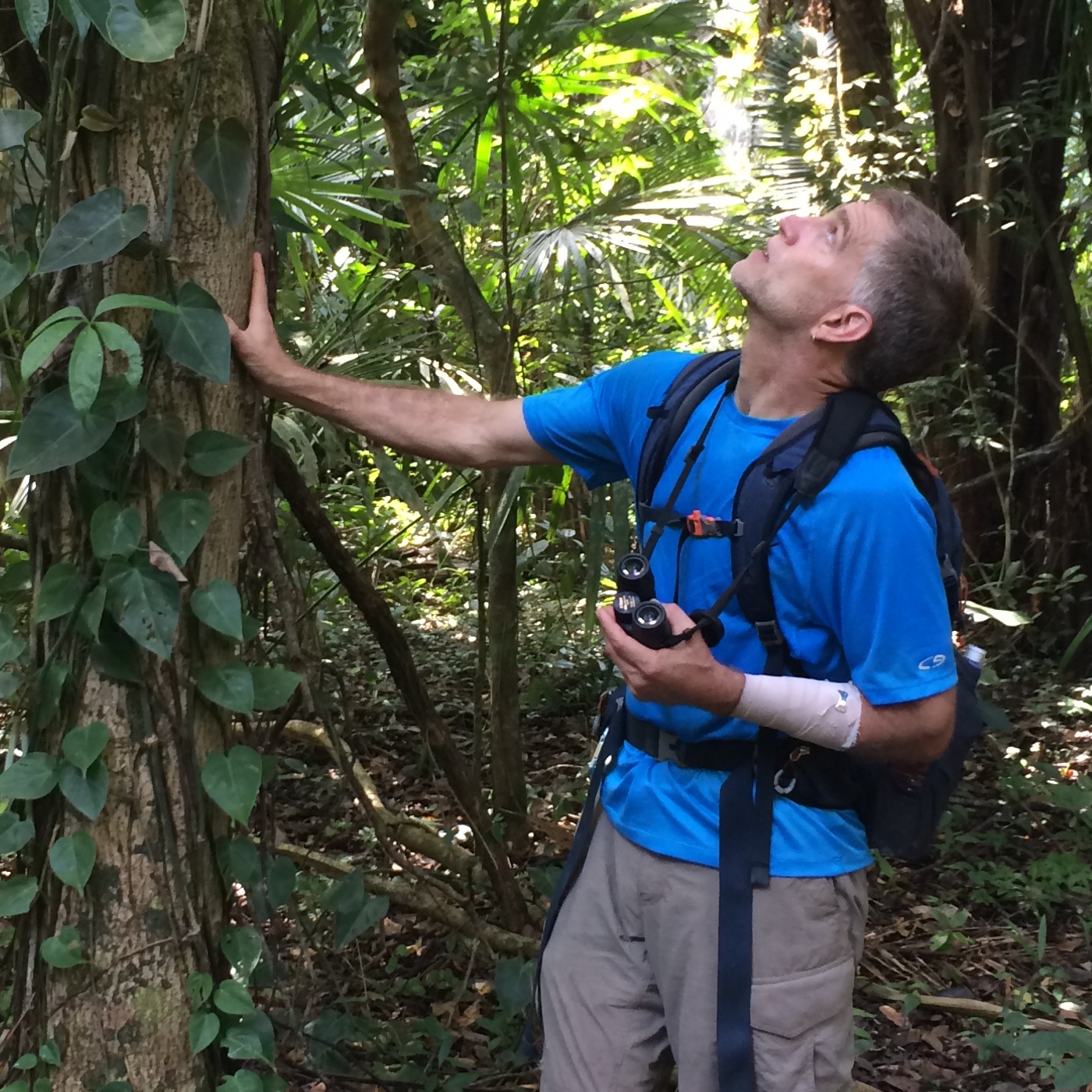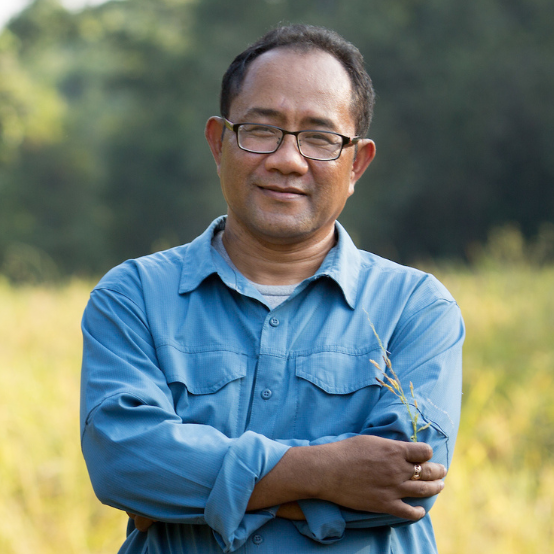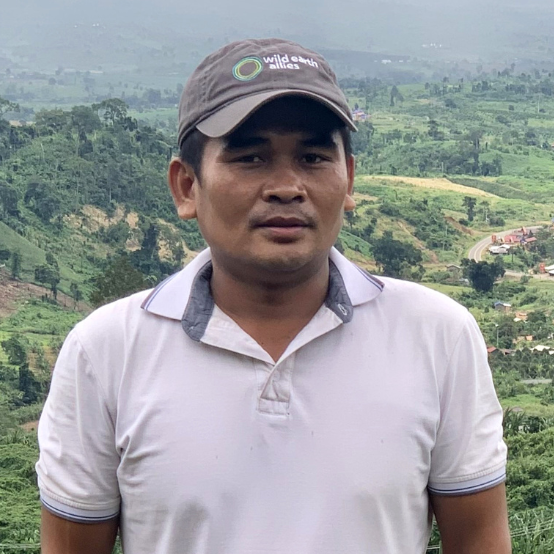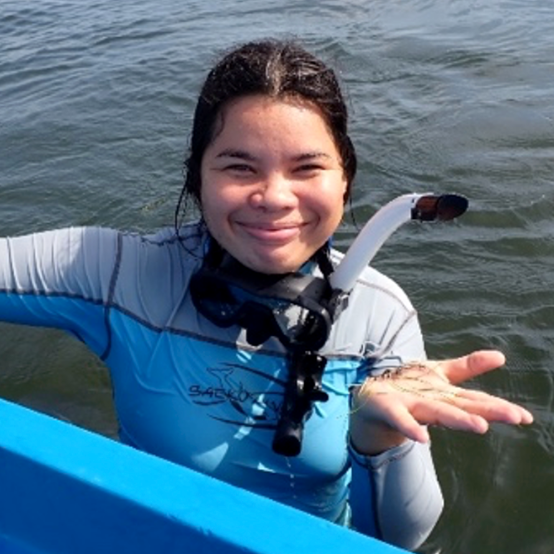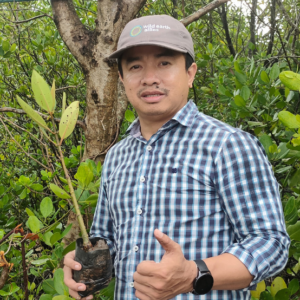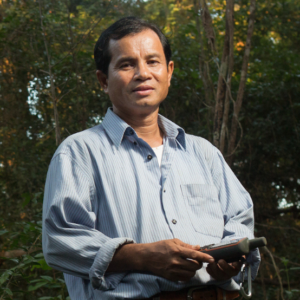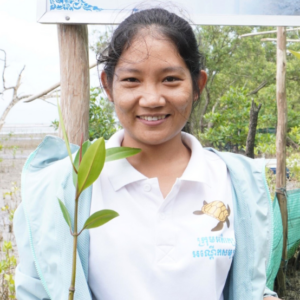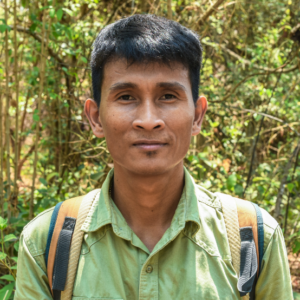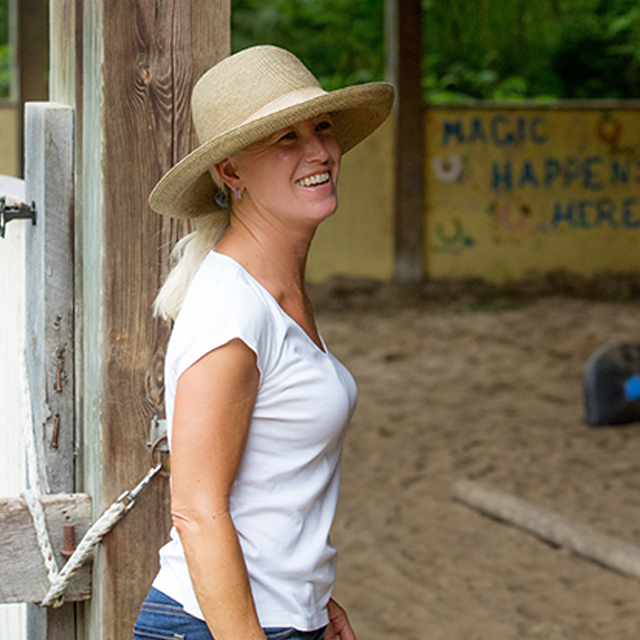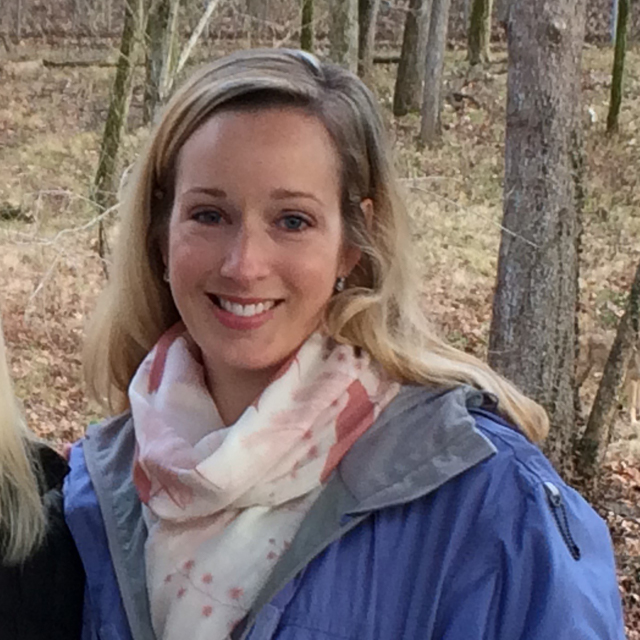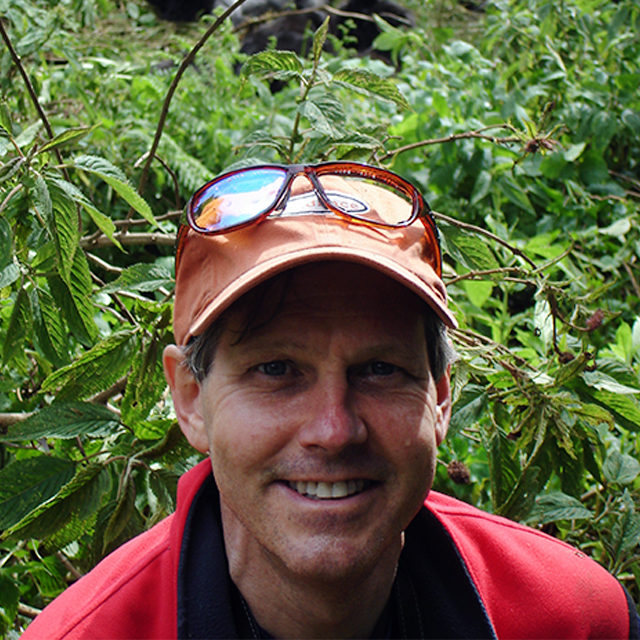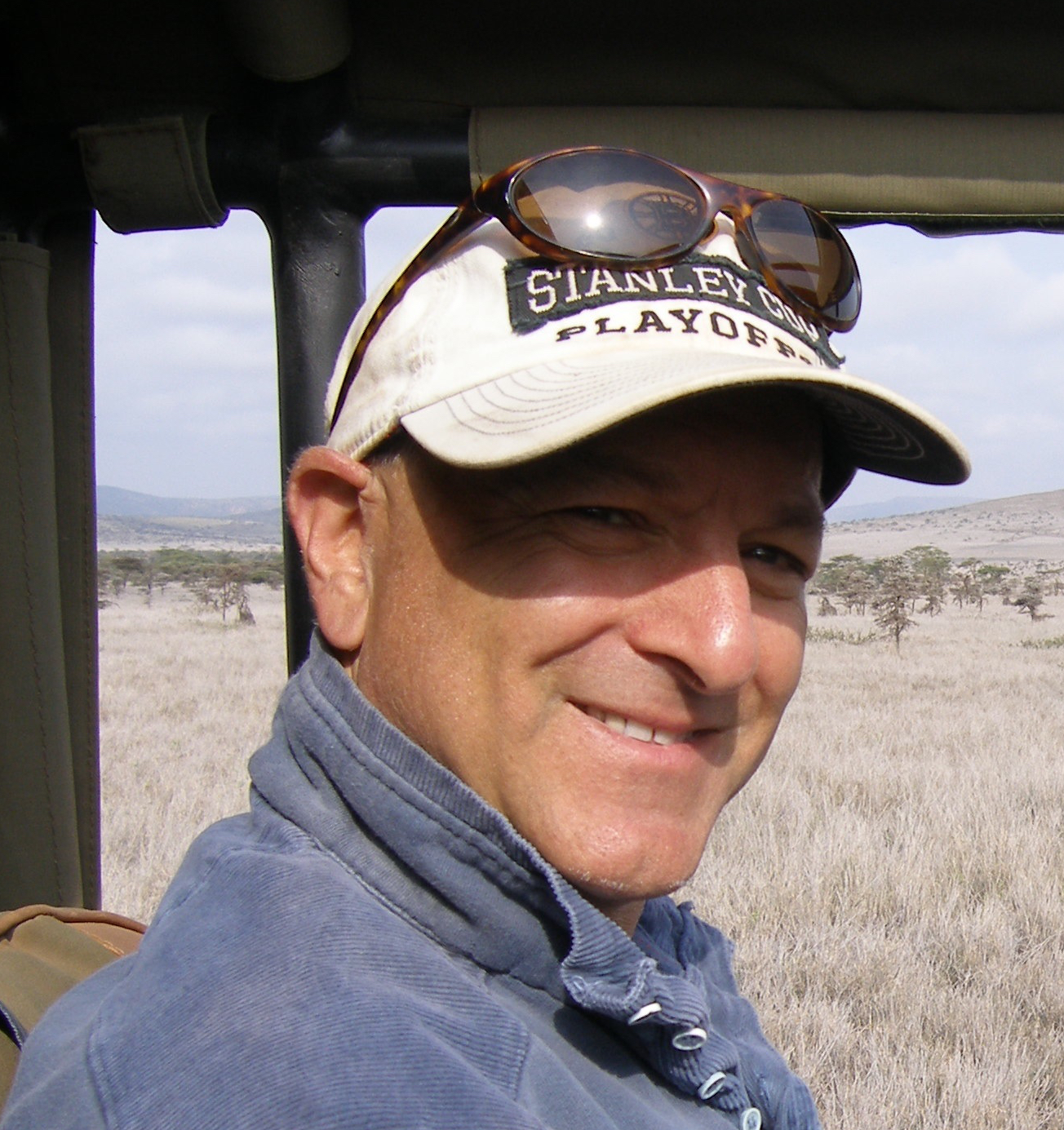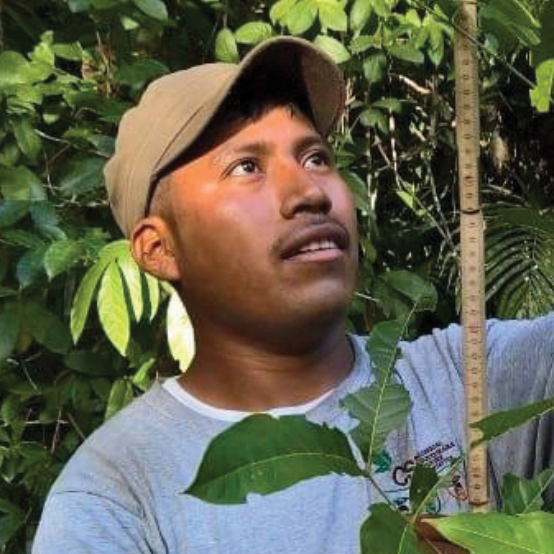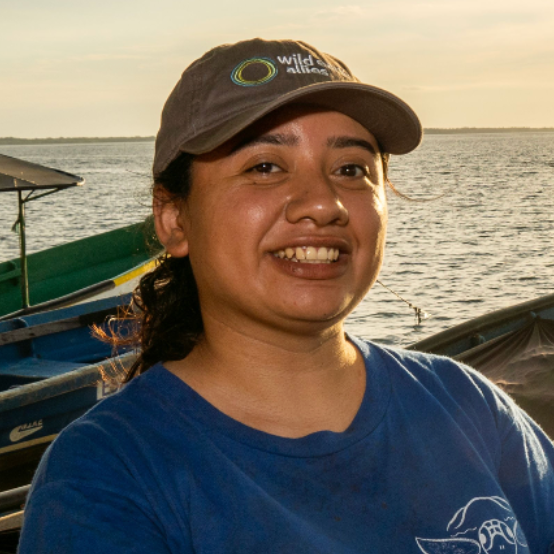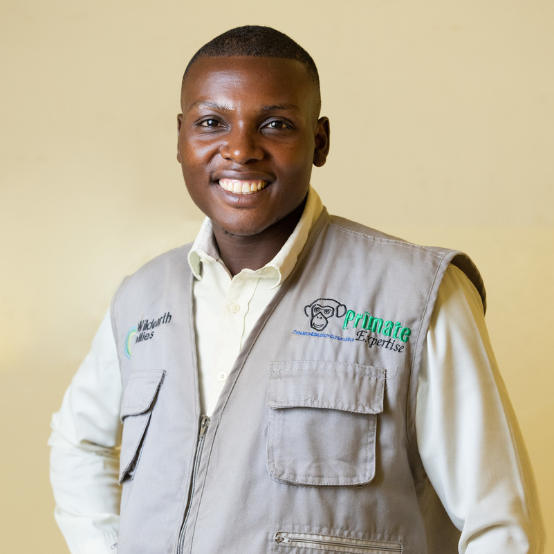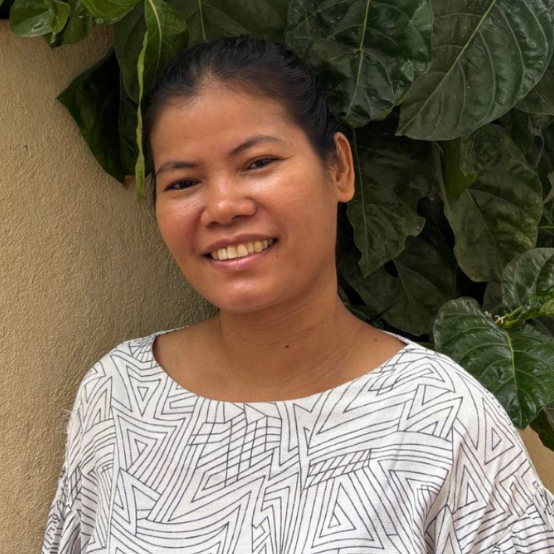Elephants play a vital ecological role in shaping and maintaining healthy forests, especially through seed dispersal. But what seeds are they dispersing, and how does this affect forest health and habitat diversity? In 2019, Wild Earth Allies began Cambodia’s first study of the Asian elephant diet in wild populations to answer these questions. After three years of research in Prey Lang Wildlife Sanctuary, we deepened our understanding of this keystone species. The findings led us to launch the Elephant Trees project, a novel tree-planting method focused on the vegetation Asian elephants eat.
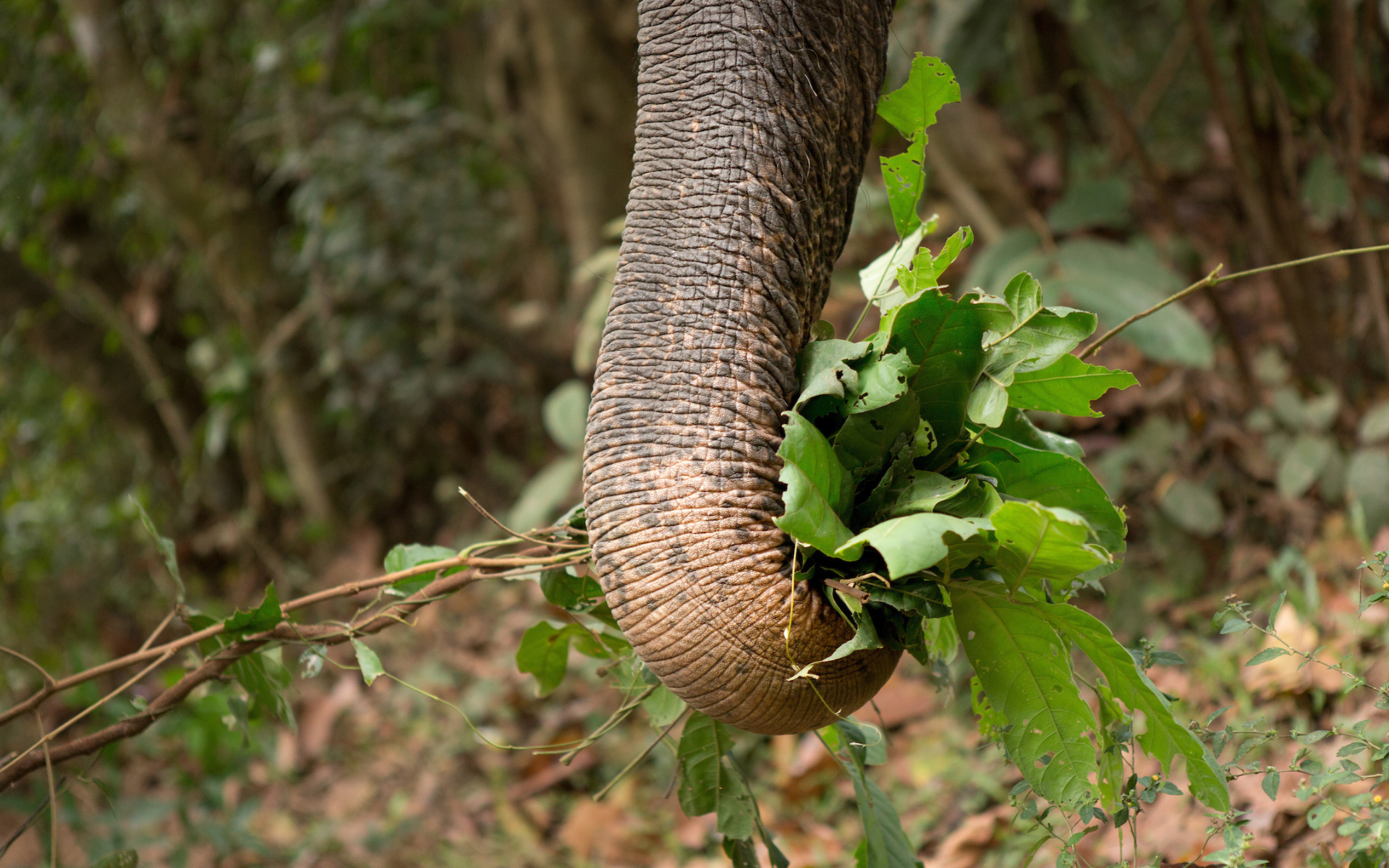
An Asian elephant eats tree leaves in Cambodia. (Photo by Allison Shelley)
What is the Elephant Trees Project?
To understand the diets of Asian elephants, our field teams followed 10 known elephant trails and documented the plants and fruits consumed by elephants. By observing freshly chewed vegetation and analyzing dung piles, the team documented 87 different plant species in the elephants’ diet. These critical findings—presented at the 19th Annual International Elephant Conservation & Research Symposium—underscore the crucial role elephants play in shaping their habitat.
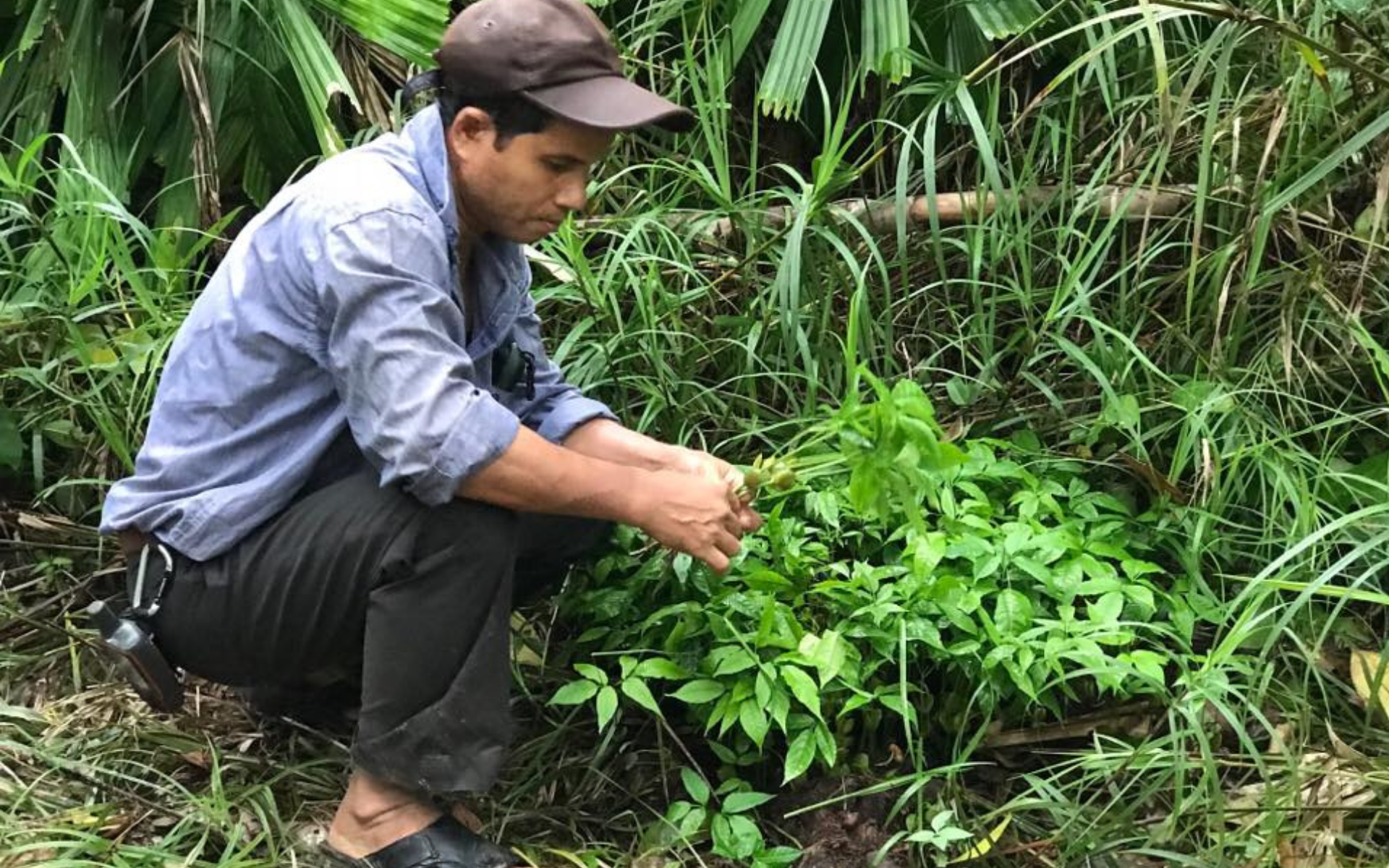
Neang Thy, Wild Earth Allies Conservation Manager, examines seedlings growing from elephant dung. (Photo courtesy of Neang Thy)
Prey Lang is a globally important refuge for over 55 threatened wildlife species but faces pressures from deforestation, illegal logging, and unsustainable land-use practices. With research findings in hand, our team wondered: Could we work with the elephants to restore this invaluable habitat?
In 2020, we established an Elephant Trees nursery for restoration efforts, creating seasonal jobs for three members of the local Indigenous Kuy community. We tested whether seeds grown from elephant dung are more effective for reforestation compared to traditional methods using seeds from the forest floor. Our research is ongoing, but early results suggest that some species may rely on elephant digestion to sprout.
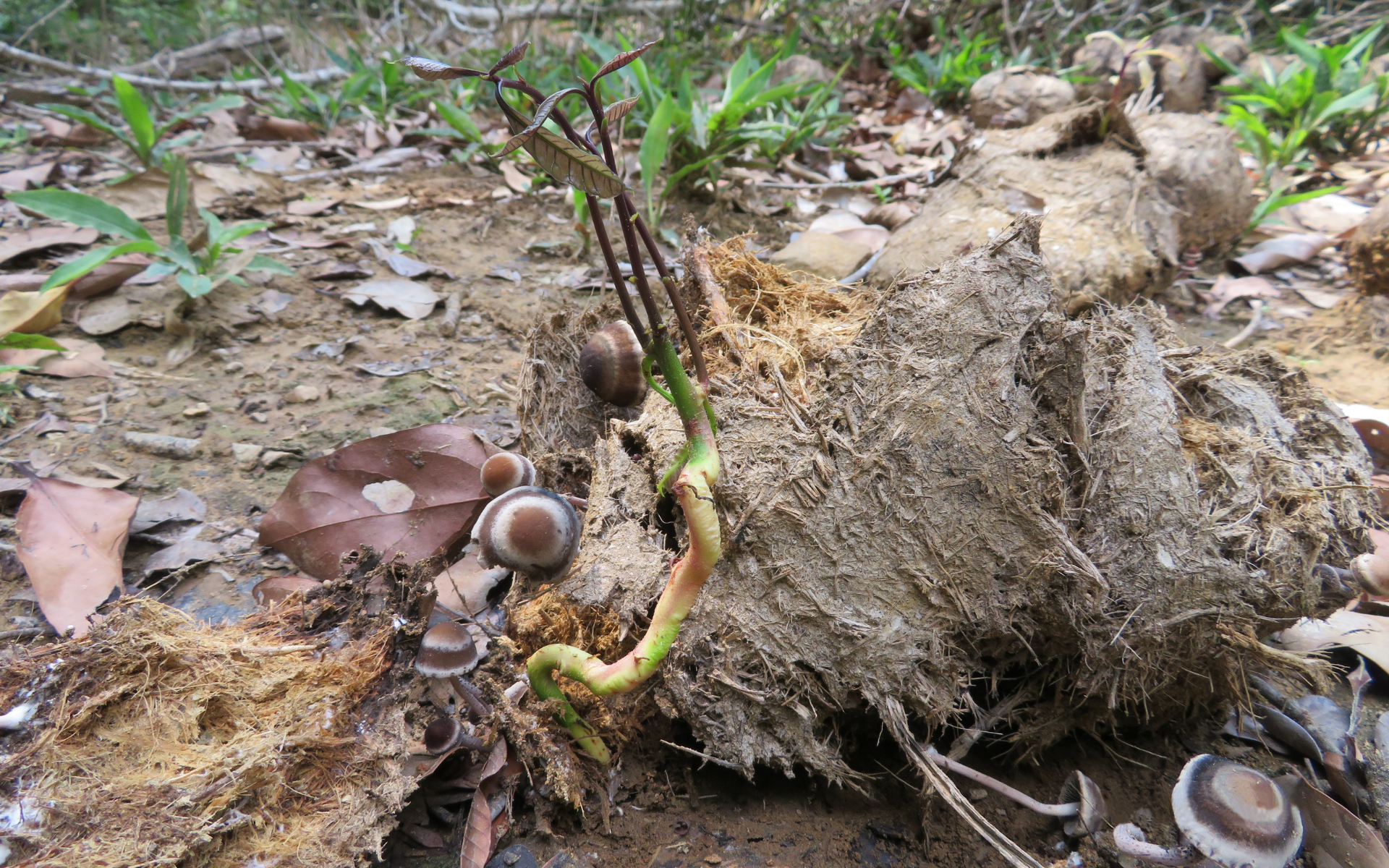
Wild mango sprouts from elephant dung on the forest floor. (Photo courtesy of Neang Thy)
Growing Restoration Efforts
Since our Elephant Trees project began, we’ve planted 2,472 seedlings in degraded areas of Prey Lang. These include six species vital to elephants and the Indigenous Kuy community as food and traditional medicine. In collaboration with the local community and Ministry of Environment officials, these restoration efforts targeted key elephant habitats identified over decades of our team’s work in Prey Lang.
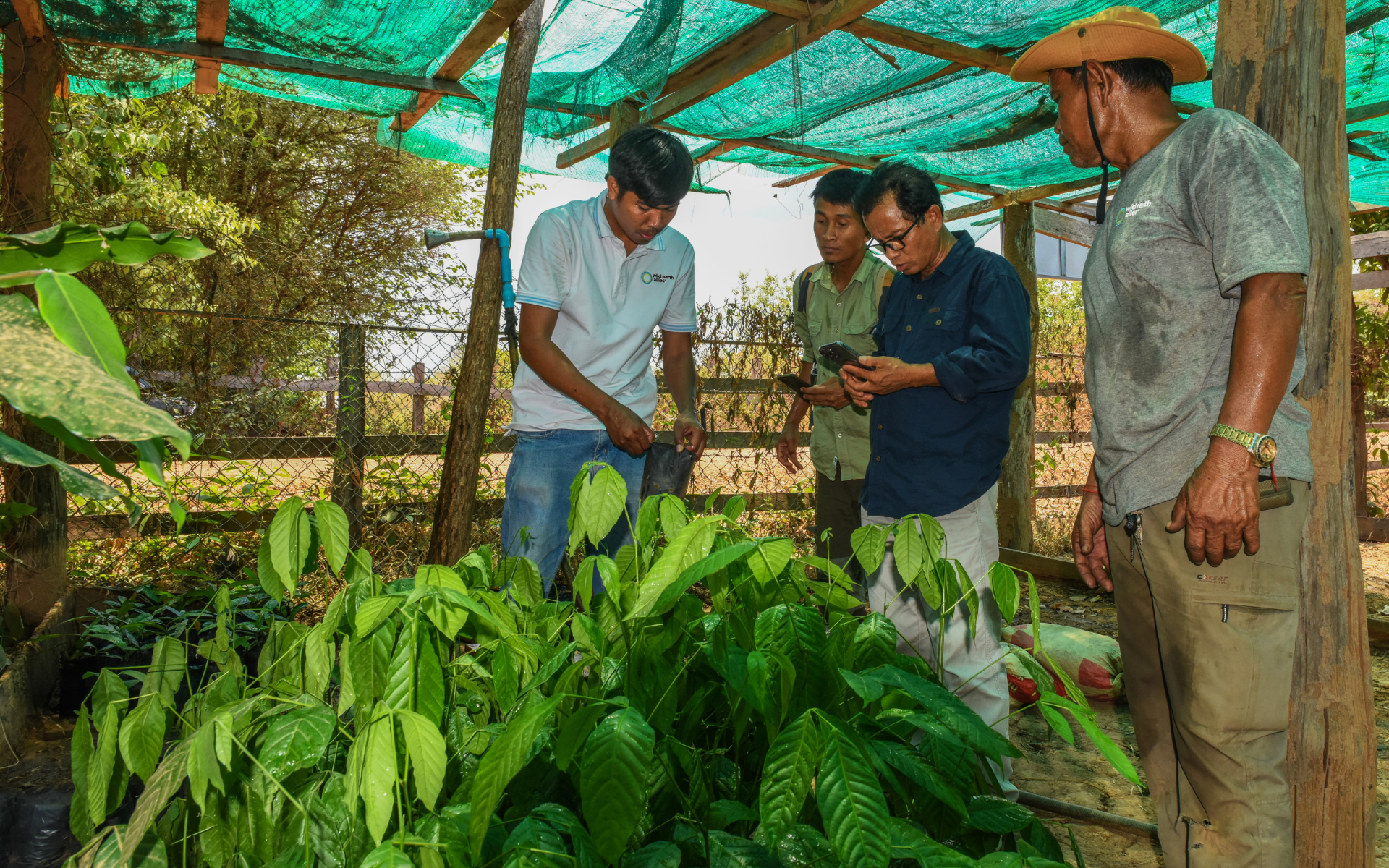
Wild Earth Allies team members document the growth of new seedlings at the Elephant Trees nursery. (Photo by Ben Valentine)
Building on our initial restoration success, we’ve expanded with a second, much larger Elephant Trees nursery, now growing 20,000 seedlings in partnership with the Stung Treng Provincial Ministry of Environment. As we continue to study this habitat and the role of elephants within it, these trees will be essential for restoring the Prey Lang landscape.
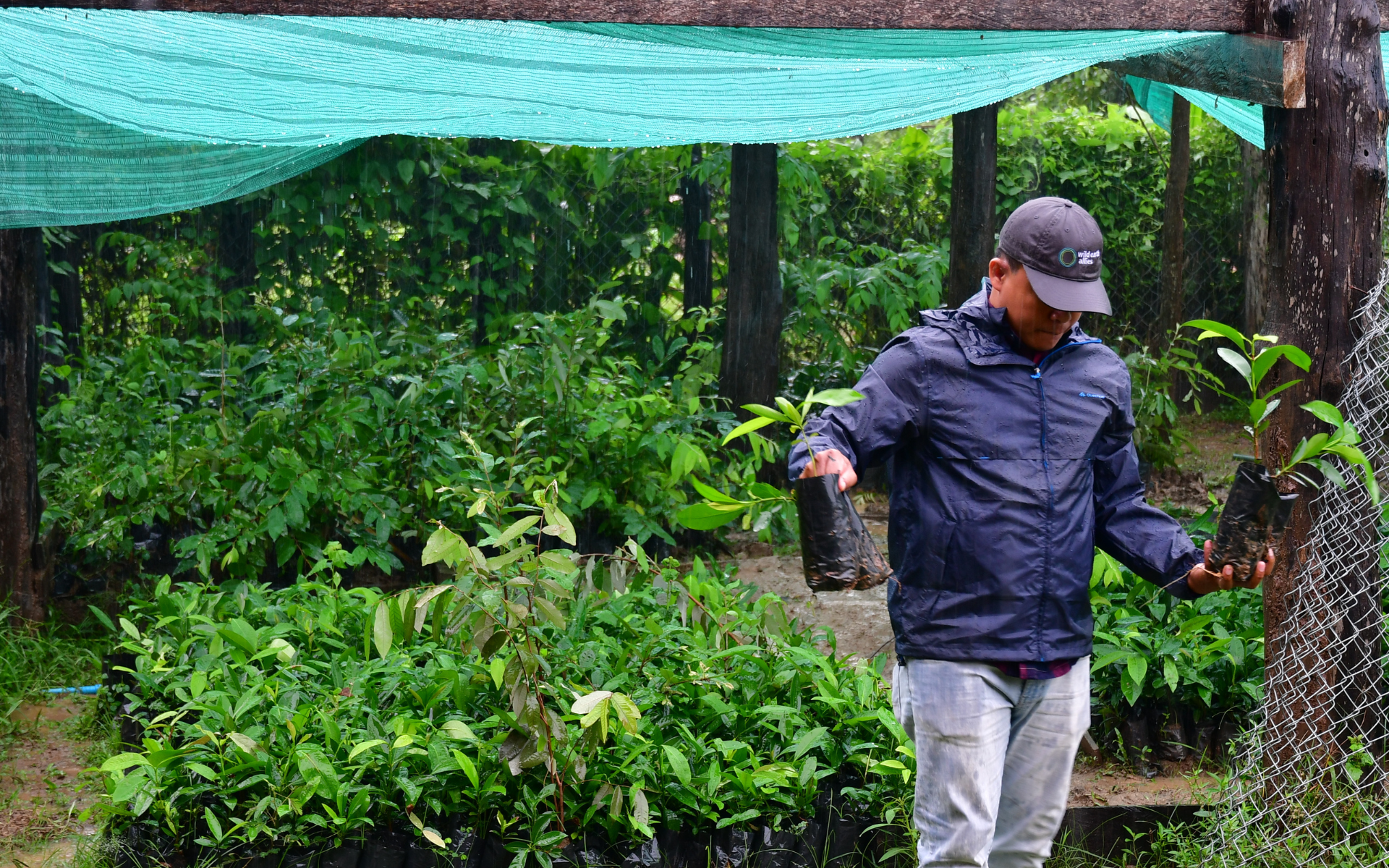
Wild Earth Allies Operations Manager, Chea Phallin, works in the Elephant Tree nursery. (Photo courtesy of Chea Phallin)
Global Collaboration: The Ape Trees™ project
In the Democratic Republic of the Congo, our partner Augustin K. Basabaose, Ph.D., and his Primate Expertise team made a similar discovery after decades of researching gorilla and chimpanzee diets. They found that planting seeds collected from great ape dung serves as a cost-effective and non-invasive way to restore degraded forests. In partnership with Wild Earth Allies, Primate Expertise has planted over 68,000 seedlings through the Ape Trees™ project, restoring 813 acres in Kahuzi-Biega National Park.
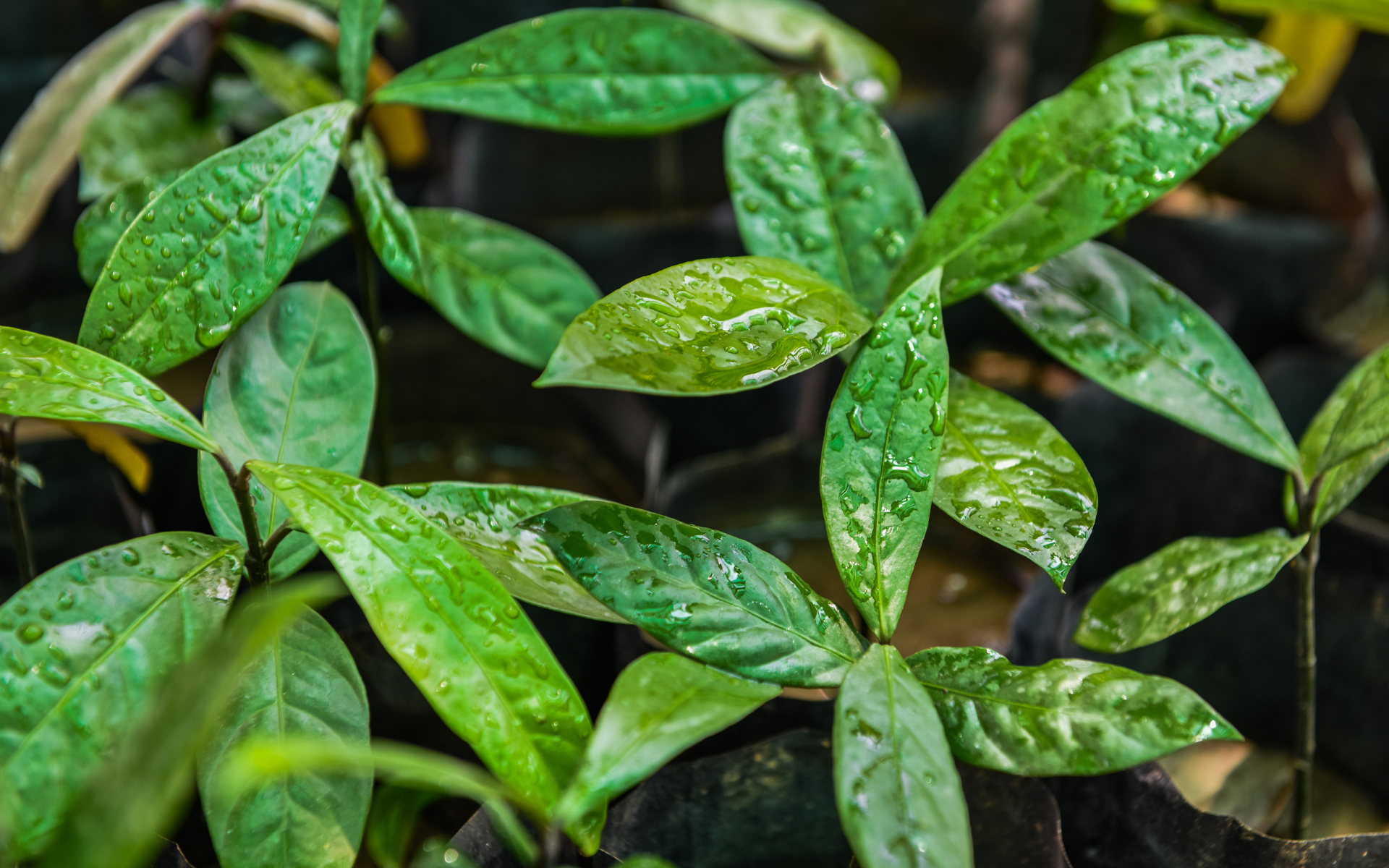
Garcinia vilersiana, a seedling known for its medicinal properties, grows in our Elephant Trees nursery. (Photo by Ben Valentine)
The Big Picture
Our research is shedding new light on the critical role Asian elephants play in maintaining Cambodia’s diverse forest habitats. By demonstrating elephants’ impact on ecosystem health, we are informing conservation strategies to protect and restore Prey Lang’s globally significant ecosystem. Our Elephant Trees program offers an innovative path toward regenerating essential habitats for both elephants and the local communities that depend on them. Moving forward, we plan to research the value of Elephant Trees for community use.
This work is part of our larger commitment to conserve threatened tree species in Prey Lang. Our efforts contribute to healthy forest ecosystems that support thriving wildlife populations and sustainable livelihoods of Indigenous Kuy communities. With support from Fondation Franklinia we assess, protect, and restore threatened trees in Prey Lang. These include several globally threatened species of ecological and cultural value, such as Siamese and Burmese rosewood.
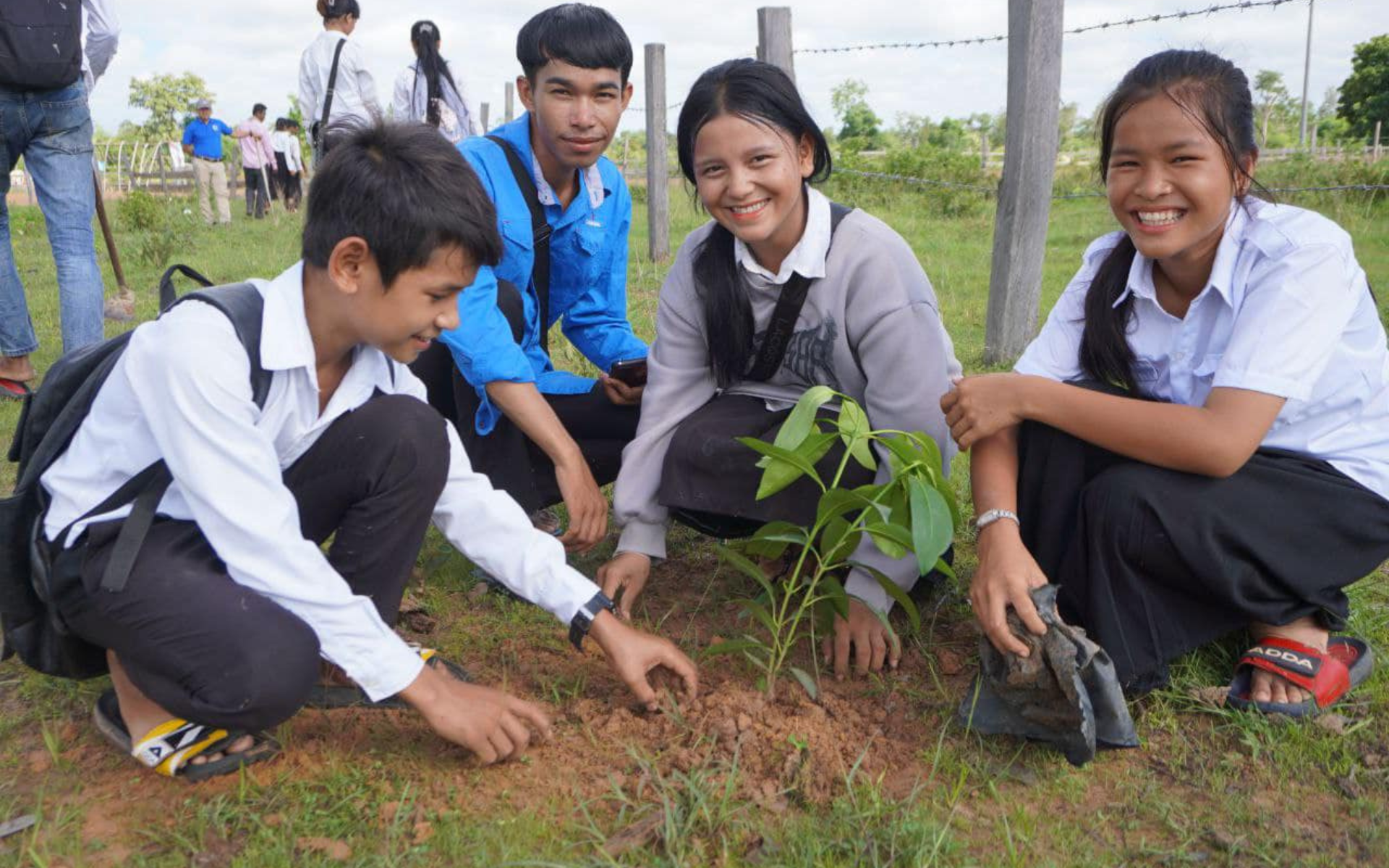
Students plant seedlings from the Elephant Trees project. (Photo courtesy of Chea Phallin)

